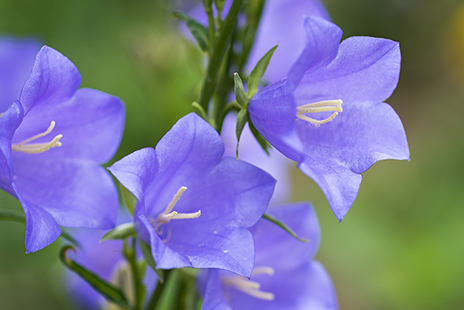
Caring for Campanula
Campanula, otherwise known as bellflower, are attractive perennial garden plants with profuse, colorful flowers and a lengthy blooming period. They are also known as bluebells, but the name is misleading–campanula are available in many shades, including palest white, cherry red and deep purple. While it may not be practical to grow the giant campanula varieties indoors, there are many smaller cultivars that are beautiful inside the home. With the proper care, you can have a thriving indoor garden of bellflowers.
Select the campanula variety that best fits your needs for indoor growing. Good varieties to grow as houseplants include the Italian bellflower, a trailing plant that looks lovely in indoor hanging baskets, and the pouffe bellflower–campanula lactiflora–which forms into a dense mound and grows well in indoor containers. The double miniature campanula, or haylodge bellflower–which features delicate blue blossoms that have been likened to dollhouse roses–is also a good choice.
Pot your campanula in a good-quality potting mix, in containers or baskets that provide ample drainage.
Affix a fluorescent grow light 6 inches over your campanula to provide it with proper conditions and keep it on at least 13 hours a day. To really thrive, especially in the winter, campanula need more light than can be afforded by a sunny windowsill.
Water to keep soil evenly moist but not soggy. Water should be at room temperature; if you use tap water, let it sit for 24 hours to remove undesirable chemicals.
Feed your campanula every 12 days through the flowering period with liquid fertilizer for blooming plants. In the winter, dilute the solution to half the recommended strength; in late spring, return to normal feedings.
Point a fan above your campanula to provide proper air circulation. The fan should point over the tops of your campanula plants, not directly at them. A ceiling fan is fine for this purpose but run it at the lowest setting.
Deadhead your campanula regularly to promote blooming. When all the blooms have died, prune the plant down to an inch above the soil and let it re-grow; it will quickly bloom again.
Information courtesy of GardenGuides.com

 Adams Fairacre Farms
Adams Fairacre Farms